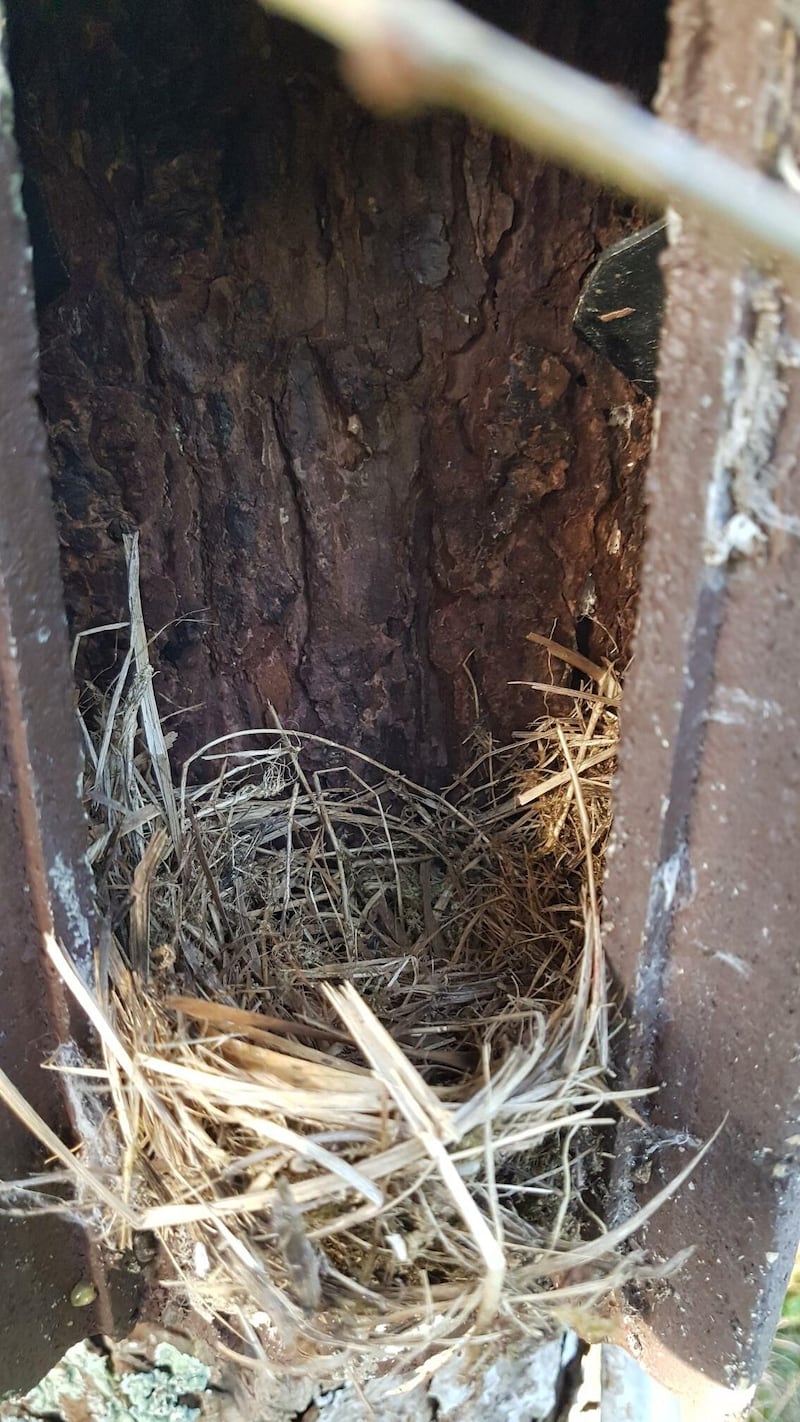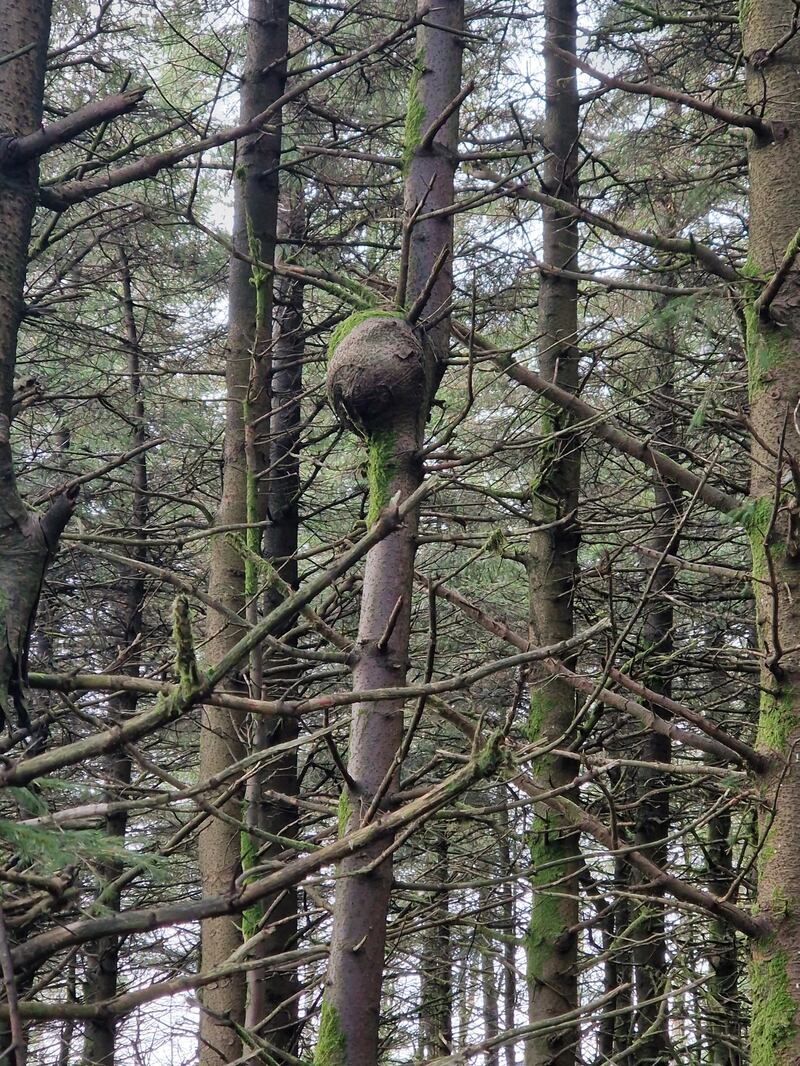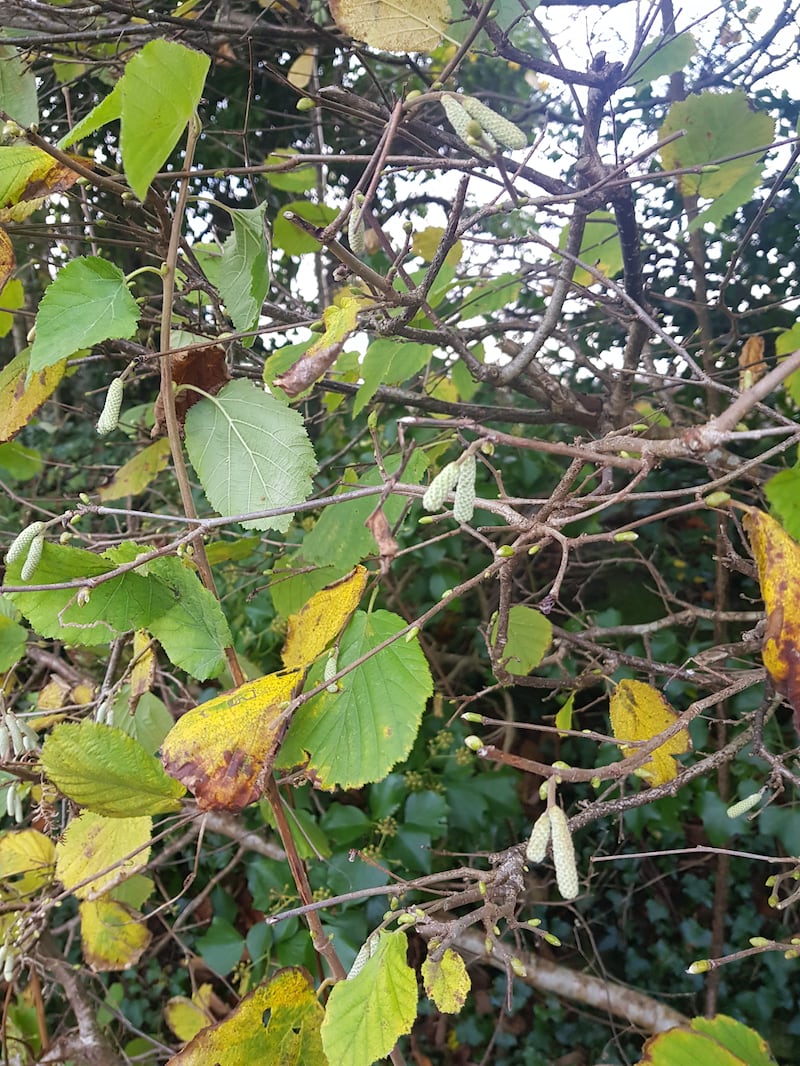I came across this unusually coloured fungus on the dunes at Magilligan. The cap was about 60mm in diameter and the purple/lavender colour on the gills and stem was quite striking. Michael Cross, Limavady, Co Derry
The mycologist Hubert Fuller names it as Lepista sordida var. lilacea: the sordid blewit.

When I cleaned our nest boxes I came across an unusual nest from a treecreeper box that hosted tits in recent years. This year the building material is different, containing dried grasses. Could it be that the treecreeper finally has accepted the dwelling? Josef Finke, Co Tipperary
Yes, indeed. It is the nest of a treecreeper. Nest boxes are valuable breeding places for hole-nesting birds.
READ MORE

Hiking from Lugduff to Mullacor in Glendalough, I noticed this attached to a tree. It looks like a wasps’ nest, but is that likely? Sinead McDonough, Co Wicklow
It’s definitely not a wasps’ nest, just a growth on the tree. Mind you, if it had been in the tropics it could possibly be a termite nest, and there are South American wasps that build their nest from mud – but not in Co Wicklow.

Every day around dusk, hundreds if not thousands of gulls are to be seen winging their way in a procession southwards over the Irishtown nature reserve in the general direction of Dún Laoghaire. What is going on? John Tobin, Co Dublin
The gulls are going home from work. They are heading to roost for the night, having spent the day foraging around the parks, canals, playing fields and gardens of Dublin. Some roost along the piers in Dún Laoghaire, as well as in the harbour itself, and also on the rocks in nearby Scotsman’s Bay and around Bullock Harbour. There is safety in numbers, and those coastal locations are far less exposed to nocturnal predators such as foxes.

I was surprised to see catkins on the hazel tree in the middle of November, but there were no female flowers then. Could this mean a shortage of hazelnuts next autumn? Laura Kennedy, Co Galway
Who knows in these strange times. Temperatures were way above average last November.
Please submit your nature query, observation, or photo with a location, here














